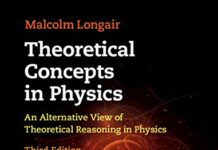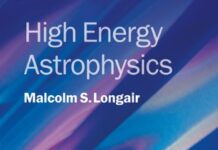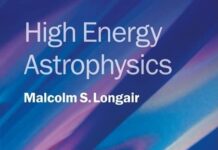
Ebook Info
- Published: 2006
- Number of pages: 554 pages
- Format: PDF
- File Size: 18.79 MB
- Authors: Malcolm S. Longair
Description
The twentieth century witnessed the development of astrophysics and cosmology from subjects which scarcely existed to two of the most exciting and demanding areas of contemporary scientific inquiry. In this book Malcolm Longair reviews the historical development of the key areas of modern astrophysics, linking the strands together to show how they have led to the extraordinarily rich panorama of modern astrophysics and cosmology. While many of the great discoveries were derived from pioneering observations, the emphasis is upon the development of theoretical concepts and how they came to be accepted. These advances have led astrophysicists and cosmologists to ask some of the deepest questions about the nature of our Universe and have pushed astronomical observations to the very limit. This is a fantastic story, and one which would have defied the imaginations of even the greatest storytellers.
User’s Reviews
Reviews from Amazon users which were colected at the time this book was published on the website:
⭐This book is divided into two general sections – before and after the second world war. Part 1 covers the understanding of stars and stellar evolution and Part 2 covers the understanding of large-scale structure of the universe, both up to 1939. Part 3 breaks out of the chronology to detail what Longair calls the opening up of the electromagnetic spectrum and the new astronomies thus developed. Part 4 covers the understanding of the structure and evolution of stars and galaxies since 1945 and Part 5 establishes astrophysical cosmology as a discipline in the same time period.In my view the first three parts are genuine technical history with a clear narrative line supplemented by the mathematical derivations at chapter end and useful footnotes. The last two sections are more like subjects Malcom Longair is interested in and a collection of work he finds significant in those areas. Fortunately, he has had quite broad interests, particularly in high energy astrophysics. In the last sections we begin to see more of the phenomenum that a previous reviewer complained about, the use of esoteric and undefined quantities that can be fairly confusing to the non-practitioner.In addition, the last two parts begin to raise the question of whom this book is written for and why. Is it really of interest and utility to a professional in this area? That would be interesting to know if someone would like to respond. I begin to think that Part 4, particularly, really is beyond what a university educated science and technology undergraduate would be familiar with. Too many specialized techniques are referred to in passing with little to no explanation.In any case Longair is not afraid of letting his opinions be evident. He is clearly skeptical of inflation as an explanation of all issues confronting Big Bang models. He has touching faith that future technology of observation, experimentation and simulation will stimulate the production of a new physics really needed to figure out what the heck is going on. That is not to say his view is always even sighted. His review of the determination of a non-zero cosmological constant seems to rely entirely on the work of the Supernova Cosmology Project with not a mention of the High Z SN team, which would suprise members of that group a bit, not to mention the members of the Nobel Prize Committee.Overall, I am glad I bought this book and recommend it though I probably won’t re-read all parts of it.
⭐Although classified as a “history of science”, this book is as much about the science as the history. Cosmology is one area where tracing the history of our understanding seems to coincide with an excellent approach to studying the topic itself. It is amazing how “right on” the scientists of the past few centuries were in their ideas about the universe – recent refinements being the result of vast advances in instrumentation and measurement in the most recent decades. The book also demonstrates how theory and observation played off of each other in stair-step fashion.The author is a true scholar of the subject and the work is extremely readable. All the major equations are displayed here, but the emphasis is on physical meaning not mathematical manipulation. Longair notes all the key players (with birth and death dates as appropriate), calls out their papers and books, and provides a comprehensive References section for further exploration.
⭐In this attractively produced book, Malcolm Longair, Head of the Cavendish Laboratory, recounts the development and spectacular successes of astrophysics and cosmology. Although the focus throughout is on high theory, the math tends to be confined to ‘explanatory supplements’ tacked onto the ends of chapters, with the result that general readers familiar with the basic concepts of physics and astronomy will be able to follow the narrative without difficulty. (Others would do well to begin with Bernard Schutz’s marvelous book, Gravity from the Ground Up.)The lesson that seems to emerge from this utterly absorbing story is that, in favorable circumstances, theory and observation, working in partnership, can, as it were, defy Newton’s third law and quickly slingshot one another to heights of inquiry–unreachable by unaided fantasy or vacant stargazing–from which can be spied the most bizarre truths ever disclosed. A century ago, no one could have suspected that the universe looks a lot like a bath sponge. Or that the heavenly bodies in their motions are less like a perfectly choreographed procession than like a colossal train wreck. Thanks to astrophysics and cosmology we now know that the universe is immense, immensely profligate and incredibly violent–but mostly just cold and empty. And that’s lucky for astronomers, because in a cold and empty universe you can see a long way, and a long way back.There is much in this book that will delight and amuse. In 1920, Arthur Eddington’s Cambridge colleague, Francis Aston, was making precise measurements of atomic masses. Eddington noted that four hydrogen atoms have slightly more mass than one atom of helium and suggested that this mass difference, converted to energy, could easily meet a star’s energy needs! In 1967, Hewish and Bell discovered neutron stars by making radio observations at 81.5 MHz, a frequency just a little below that of your local classical music FM station.This book is highly recommended. Rich in well-organized detail, it contains numerous well-chosen images, graphs and tables, 57 pages of references, a name index, an object index and a useful subject index. It is beautifully printed and there isn’t a dull page in it.
⭐This is almost the book for which I have been looking. It traces the history of cosmology through the 20th century giving the actual technical description of the various phenomena and models. Many original data charts and all the relevant equations are included. My only complaint is that like most cosmologists, the author assumes that the reader is familiar with the sometimes arcane notations and variable substitutions used in the field. I wish I could send the author a copy with annotations such as “what’s this?”, and in a couple of years receive an updated 2nd edition. These nits aside, the book is much more satisfying to a technically literate reader than the great bulk of popular books on cosmology.
⭐This book is in need of a good editor due to the poor descriptive writing, typos, and incorrect facts in the manuscript.
⭐Could not wait to start reading this. Will dip into it every day and probably need to read it several times to even begin to understand fully what is being said. Need to polish my maths too.
⭐Recomiendo este libro para cualquier persona que desee tener una imagen histórica-generalde la astrofísica en el último siglo. La distribución de los capítulos me parece muy interesante,resaltando la II guerra mundial como punto de inflexión en el desarrollo y avance de la astrofísica.Curiosas las frases de célebres astrofísicos e investigadores que se incluyen en el texto.Tan sólo hecho de menos, algunas referencias a sistemas binarios y múltiples, y más hincapiéen la espectroscopia óptica, autores como Walborn, Fitzpatrick, así como la importancia en laelaboración de modelos de atmósfera mas realistas.
⭐Ameno y profundo. Realiza una exposición clara e inteligente en un resumen muy completo del panorama cientifico de la astrofísica
⭐Malcoln Longair の Cosmic Centurey は20世紀の天体物理学の歴史を簡潔にまとめていて、読みやすい。内容には満足です。送本、梱包も丁寧です。
⭐
Keywords
Free Download The Cosmic Century: A History of Astrophysics and Cosmology 1st Edition in PDF format
The Cosmic Century: A History of Astrophysics and Cosmology 1st Edition PDF Free Download
Download The Cosmic Century: A History of Astrophysics and Cosmology 1st Edition 2006 PDF Free
The Cosmic Century: A History of Astrophysics and Cosmology 1st Edition 2006 PDF Free Download
Download The Cosmic Century: A History of Astrophysics and Cosmology 1st Edition PDF
Free Download Ebook The Cosmic Century: A History of Astrophysics and Cosmology 1st Edition


